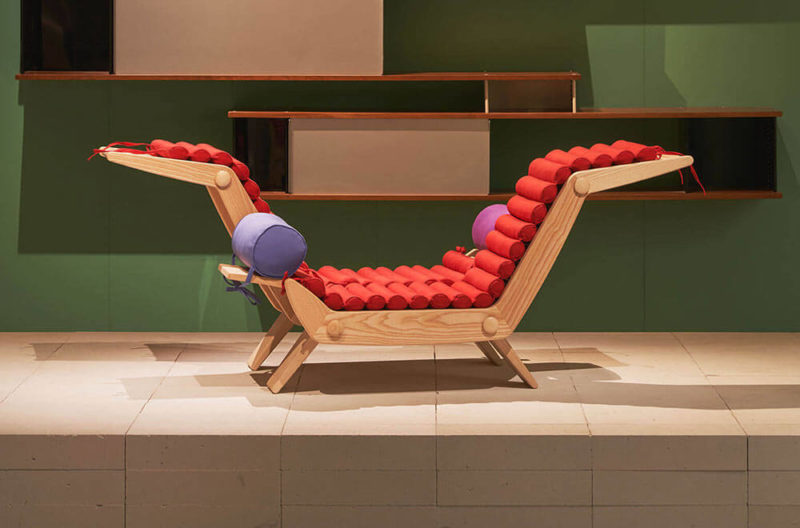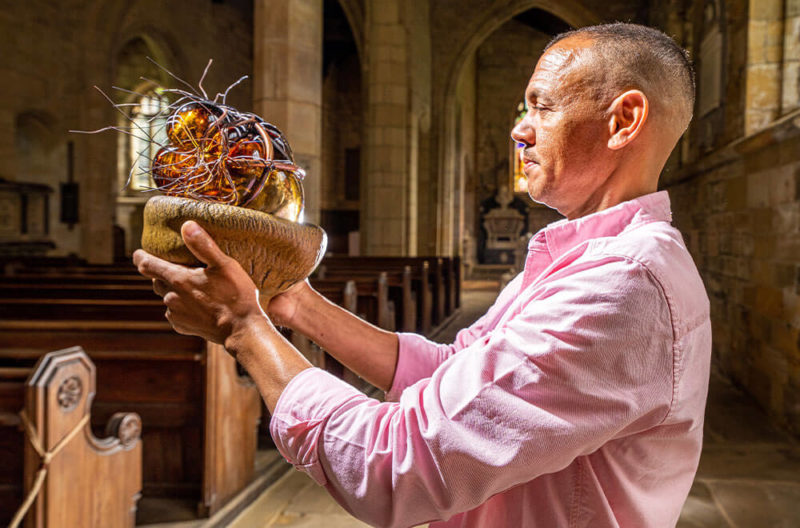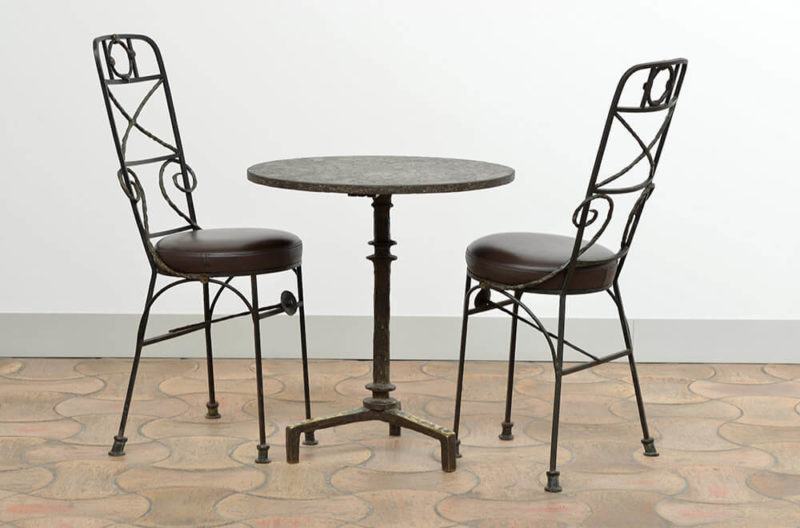Summer Shows / South of France
From Aix-en-Provence to Beaulieu-sur-Mer, The Design Edit brings you the best of the summer exhibitions, mixing art and design.

Constance Guisset: Objectif Villa! at Villa Noailles: ‘Ankara’ tables, 2014 and ‘Batchair’ chairs, 2018, all edited by Matière Grise
COURTESY: Constance Guisset & Villa Noailles
ADORED BY ARTISTS such as Matisse and Picasso, the south of France boasts dozens of astonishing villas, art centres, museums and collections, making the region’s combination of culture and nature unbeatable. In 2020, Jean-Pierre Blanc, director of Villa Noailles, and Anne Racine, director of Villa Carmignac, founded the Plein Sud network which counts 65 artistic sites located between Sérignan-Sète and Nice-Monaco.
The Design Edit reports on three of the highlights among the many exhibitions to visit.
Hubert Le Gall: ‘A Greek Fantasy’ at Villa Kerylos, Beaulieu-sur-Mer
When the Centre of National Monuments, which manages historical monuments in France, contacted the designer and sculptor Hubert Le Gall to propose an exhibition to him, his response was clear. “I said that the only place where I wanted to work was Villa Kerylos – it’s a place that inspires me and where I wanted to work,” he enthuses.
Le Gall is renowned for his whimsical furniture, lighting and design of museum exhibitions. He favoured Villa Kerylos over France’s sumptuous châteaux as it holds special meaning for him.
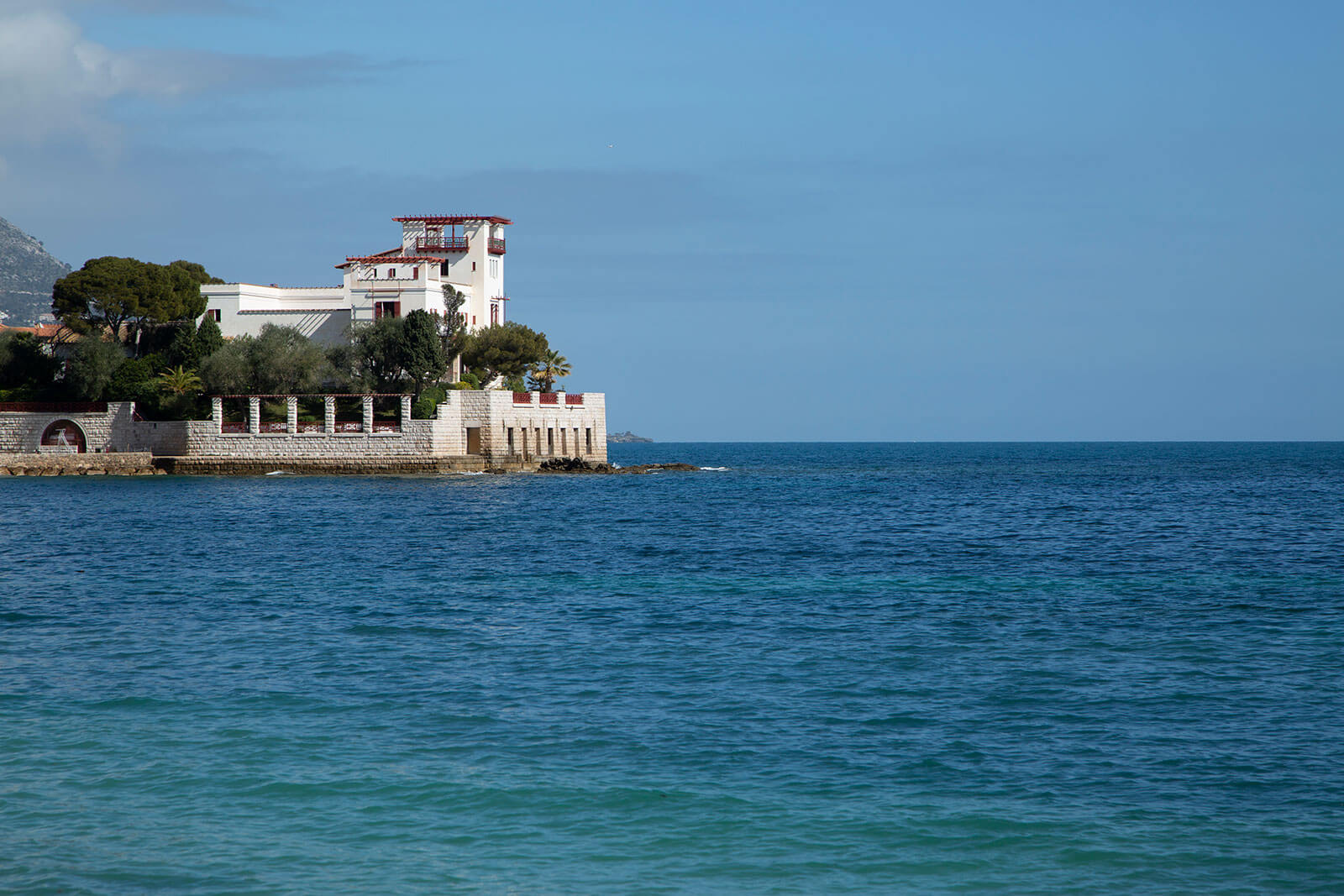
Villa Kerylos overlooking the Mediterranean
COURTESY: Hubert Le Gall & Villa Kerylos
Located in Beaulieu-sur-Mer, a beautiful seaside village with Art Deco properties along the Côte d’Azur near Nice, Villa Kerylos was constructed in the 1900s for the historian and archaeologist Théodore Reinach. Passionate about Greece’s Hellenistic period, Reinach hired local architect Elisée Emmanuel Pontremoli to design the villa in a style reminiscent of that epoch. He commissioned Adrien Karbowsky and Gustave-Louis Jaulmes to create murals and Parisian cabinet-maker Louis-François Bettenfeld to design furniture. Upon his death, Reinach bequeathed his foundation to the French state.
Hugging the coastline, the villa has always entranced Le Gall who fell under its spell three decades ago. “What I’ve always thought was fantastic is that it wasn’t about remaking things in an identical way but reinterpreting. It’s a fantasy and a real creation, both timeless and temporal, because one senses that it was constructed at the beginning of the twentieth century.”
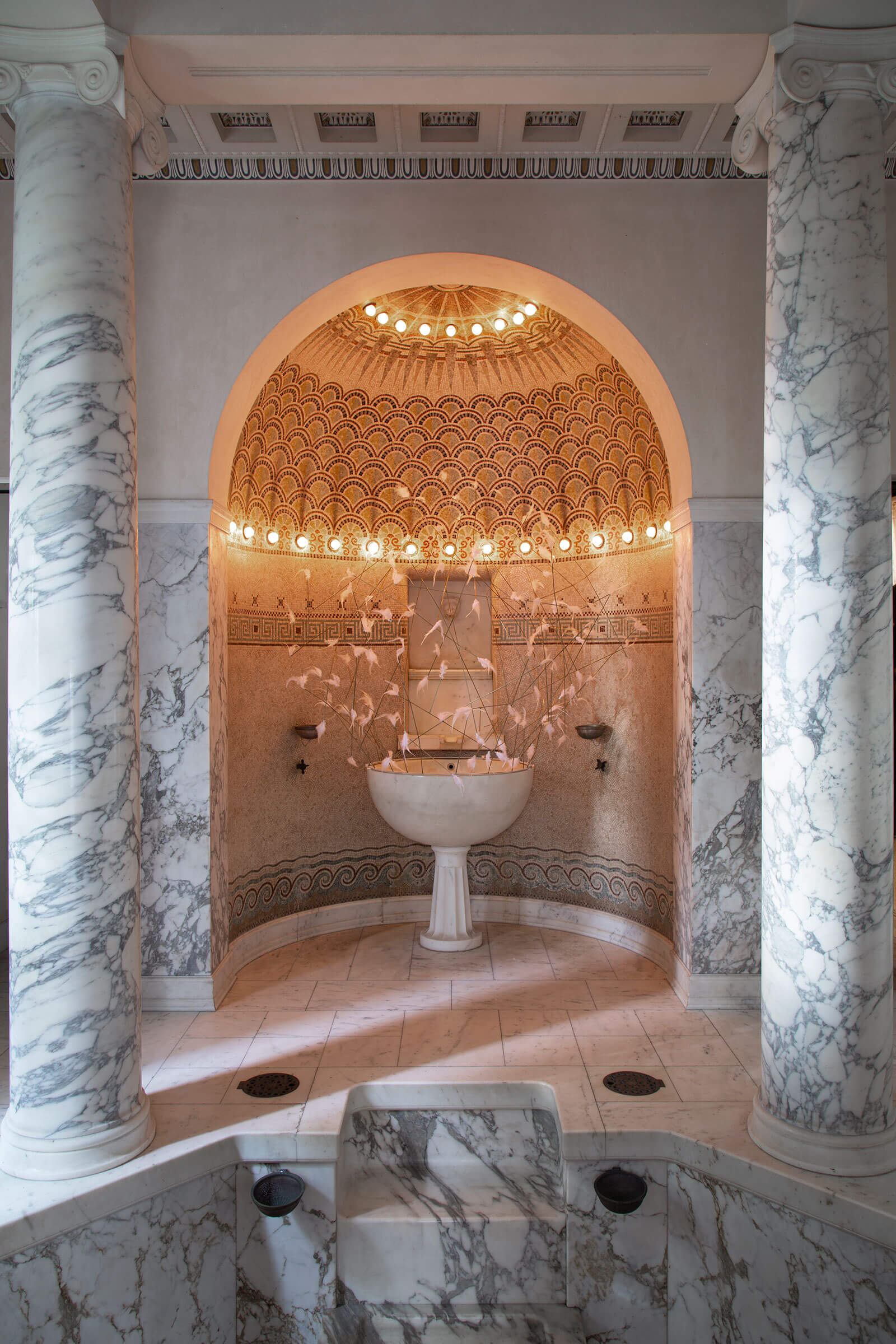
Hubert Le Gall, ‘Le murmure des âmes’, bronze and feathers installation
COURTESY: Hubert Le Gall & Villa Kerylos
Access to the splendour of the richly adorned villa came with constraints. As Le Gall, 60, says: “I couldn’t fix anything on the walls or move the furniture, I could only use the remaining space.” Le Gall reflected on Greek mythology and literature to create 35 works. As he has a home on the Cycladic island of Paros where he spends his summers, Le Gall has a strong feeling for Greek culture. This aided him in thinking about how to make works that would be congruous with the stunning villa.
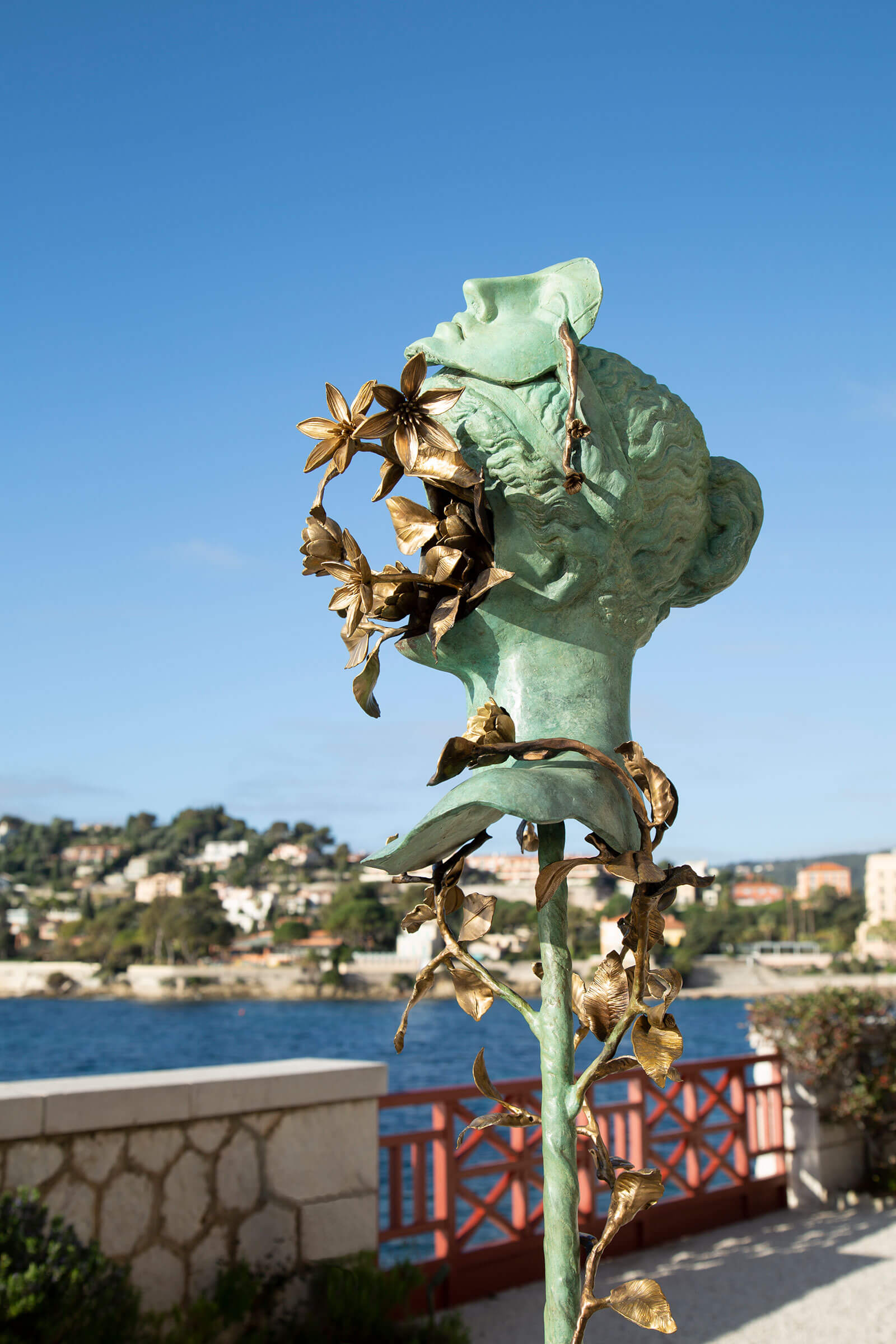
Hubert Le Gall, ‘Aphrodite aux deux visages’, bronze sculpture
COURTESY: Hubert Le Gall & Villa Kerylos
Welcoming visitors at the entrance, Le Gall’s bird tapestry, ‘Alycon’, woven by Jean-François Lesage in Paris, is suspended from the ceiling and draws on the idea of a “procession”. Symbolising the story of Alycone who was transformed into a bird by the Olympian gods, the front is dark blue, the back white. Behind it, woven ropes flank a sculpture of a Greek god; those on the right are white and yellow to evoke comedy, those on the left are red and black to evoke tragedy.
This typifies Le Gall’s intuitive approach after visiting the villa three times.“I worked very fast and the inspirations came very quickly and the story gradually constructed itself,” he says. In the ornate living-room, Le Gall recounts the myth of Pasiphae who was made to fall in love with a bull and gave birth to the Minotaur. There’s the chest-of-drawers, ‘Le Taureau’, topped with a sculpture of a bull’s head, the ‘Pasiphaé’ sofa, a bronze table referencing Ariadne, and a white marble bull adorned with candelabra. The works cleverly converse with the mosaics on the floor.
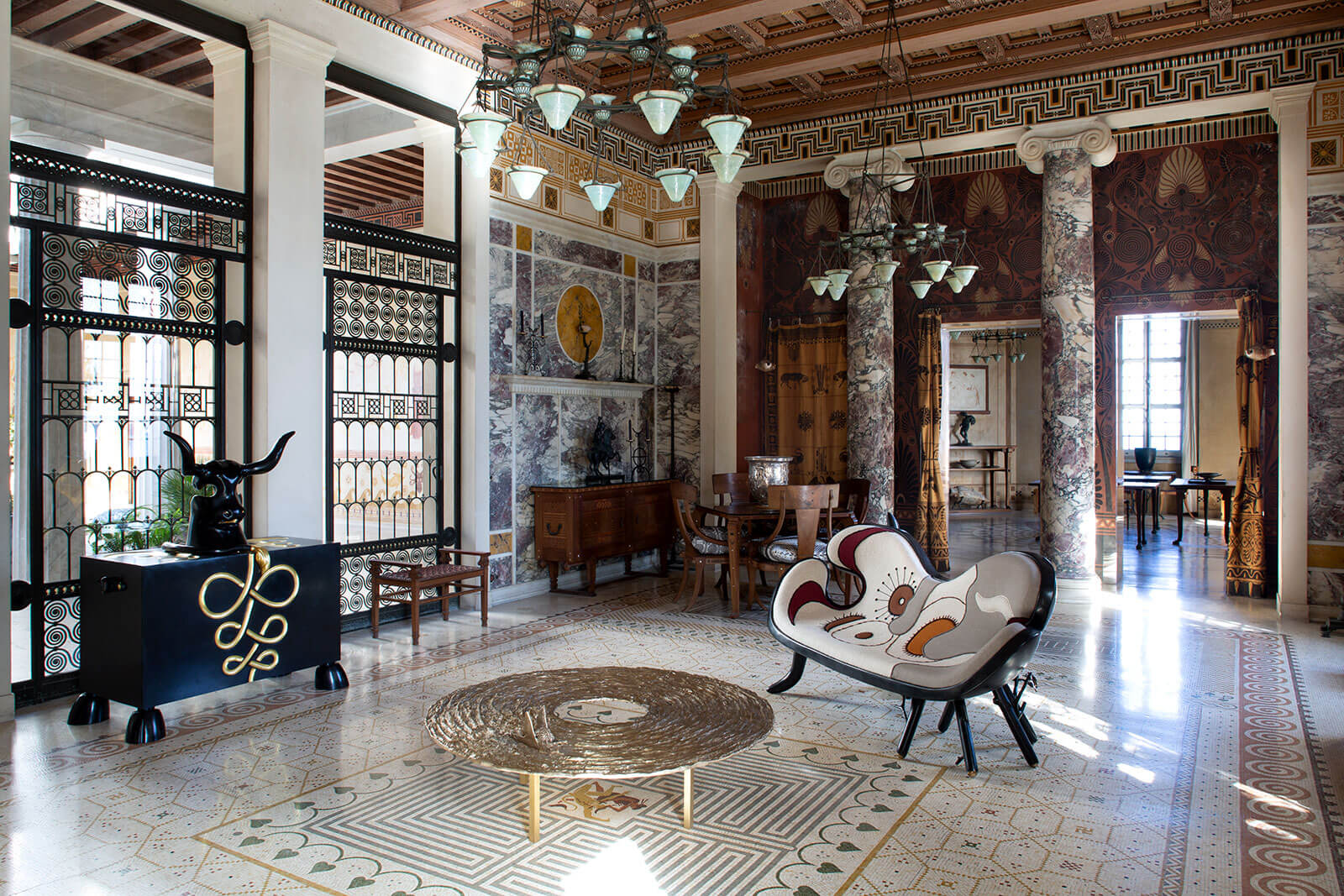
The living room with ‘Taureau’ chest of drawers, ‘Pasiphaé’ sofa and bronze ‘Le Fil d’Ariane’ table
COURTESY: Hubert Le Gall & Villa Kerylos
Le Gall let his imagination run riot throughout. In the library, his two mobile sculptures on opened books engraved with ancient scripts refer to Homer’s ‘The Iliad’ and ‘The Odyssey’. Meanwhile, upstairs he tackles myths such as the winged horse Pegasus through a graceful sculpture of a horse that opens to reveal a writing desk.
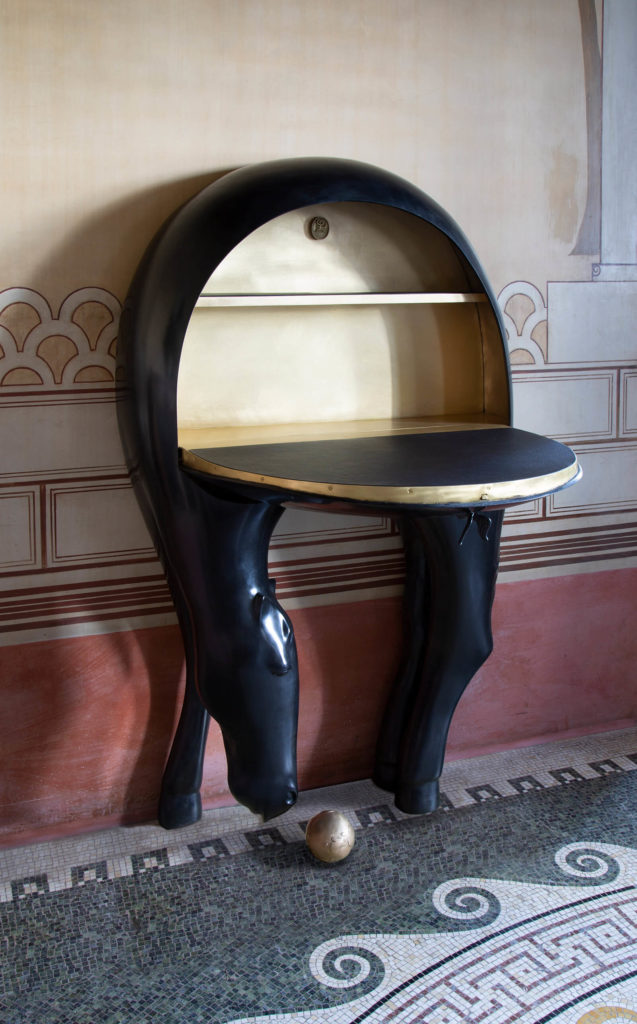
Hubert Le Gall, ‘Pégase’, 2018, bronze writing desk
COURTESY: Constance Guisset & Villa Noailles
“On the villa’s walls there are a lot of representations of the gods so I didn’t want my pieces to be a copy of that, but have a more poetic dimension,” Le Gall explains. This poetic dimension continues outside, where a bronze sculpture of the goddess Aphrodite with foliage protruding from the hollowed face, the face itself displaced onto the head, gazes out to the Mediterranean sea. Nearby, three bronze chairs interlinked by a garland of flowers, an apple fallen onto one of them, represents the three graces. Overall, it’s a magical exhibition. Le Gall has excelled at creating a rich dialogue with this unique villa by employing a meticulous attention to detail.
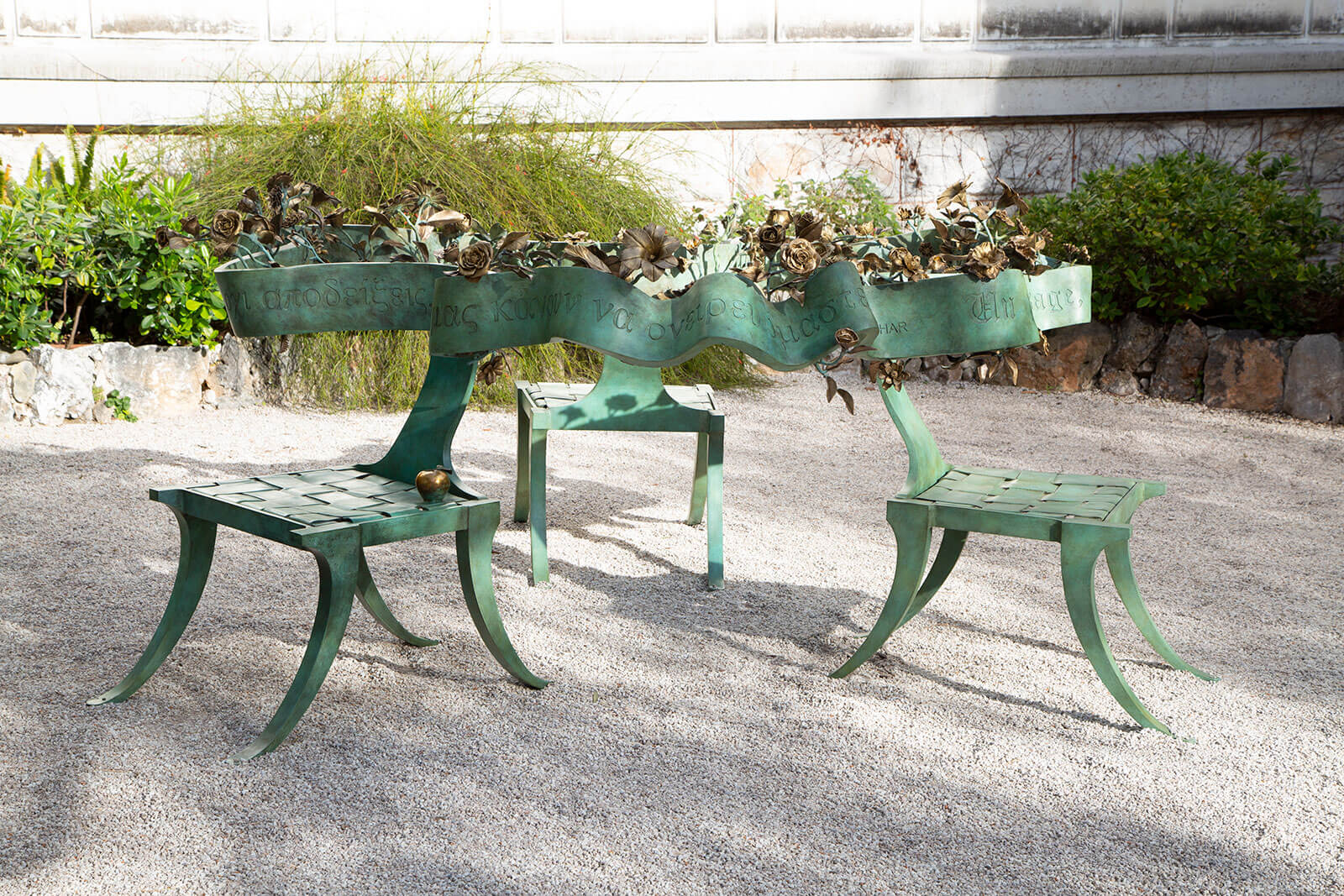
Hubert Le Gall, ‘Le ruban d’Aphrodite’, bronze chairs
COURTESY: Hubert Le Gall & Villa Kerylos
Richard Long and Roni Horn at Château La Coste near Aix-en-Provence
Château La Coste near Aix-en-Provence, a picturesque university town famous as Cézanne’s birthplace, is not your traditional château. It’s the name of a vast estate owned by Irish property billionaire Patrick McKillen, who has set out to marry vineyards and hospitality with contemporary art and architecture.
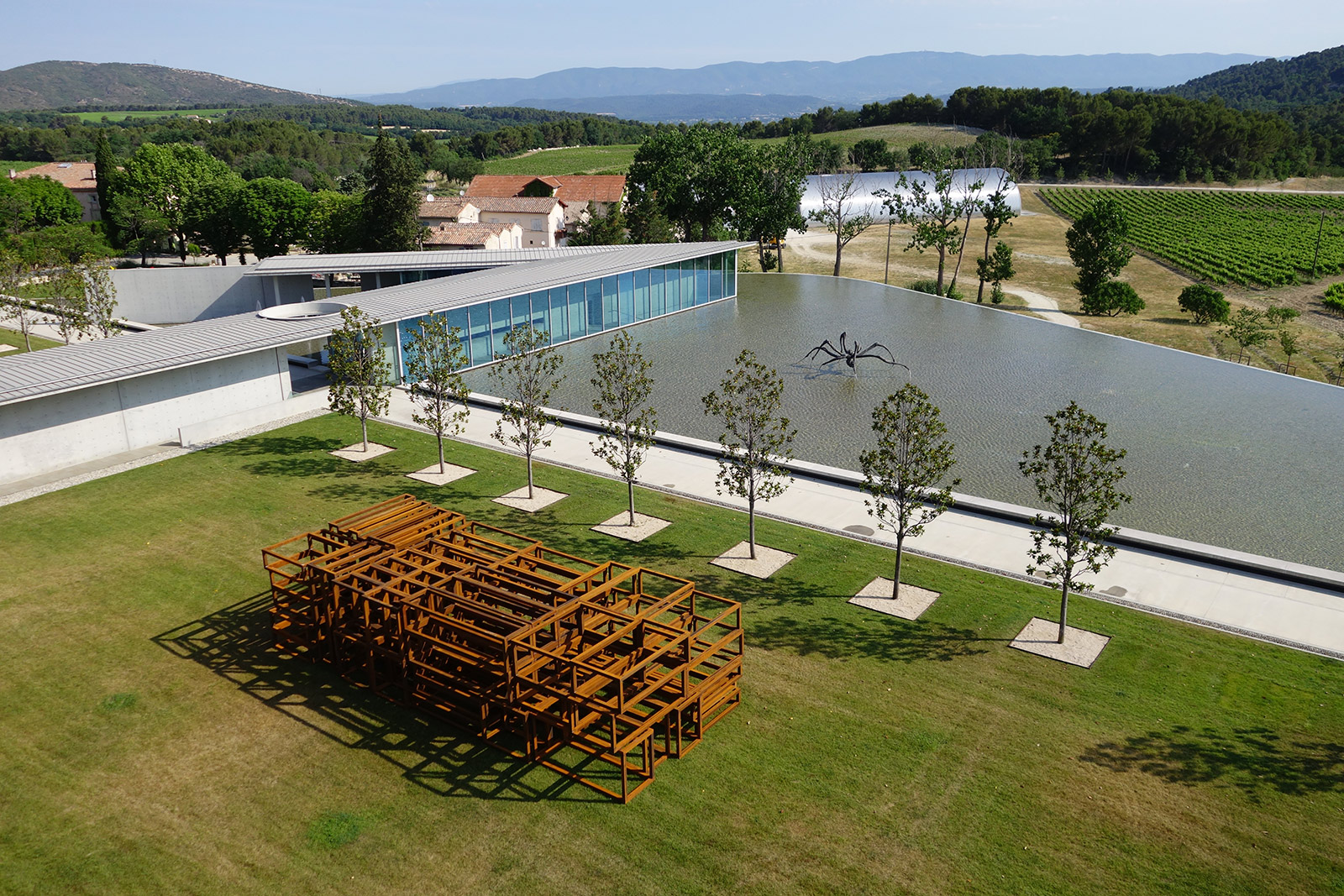
Château La Coste with Sean Scully, ‘Boxes Full of Air’, 2015; Tadao Ando Art Centre, 2011; Louise Bourgeois, ‘Crouching Spider’, 2003
COURTESY: © Louise Bourgeois Foundation & ADAGP Paris
McKillen’s hilly domain stretches over 200 hectares, including 125 hectares dedicated to organic vineyards in order to produce red, white and rosé wine. Located in the Var, it stretches out towards the glorious Luberon mountains. When The Design Edit visited in mid-August, the grapes were ripening, due to be harvested a few weeks later. But it is not just the vineyards that attract thousands of tourists each year.
Visitors are eager to see the works by today’s leading creatives that McKillen, who discovered the region thanks to his sister Mara who manages Château La Coste, has been steadily integrating since buying the domain in 2002 and opening it to the public in 2011. The main art centre is an elegant, low lying edifice by Japan’s Tadao Ando in his signature pale grey concrete, its glass-walled facade overlooking a shallow pool where Louise Bourgeois’s gigantic bronze ‘Crouching Spider’ (2003) is installed and reflected in the water. In the glistening water Richard Long’s piece, ‘A Line in Provence’ offers a serene path across the shallows.
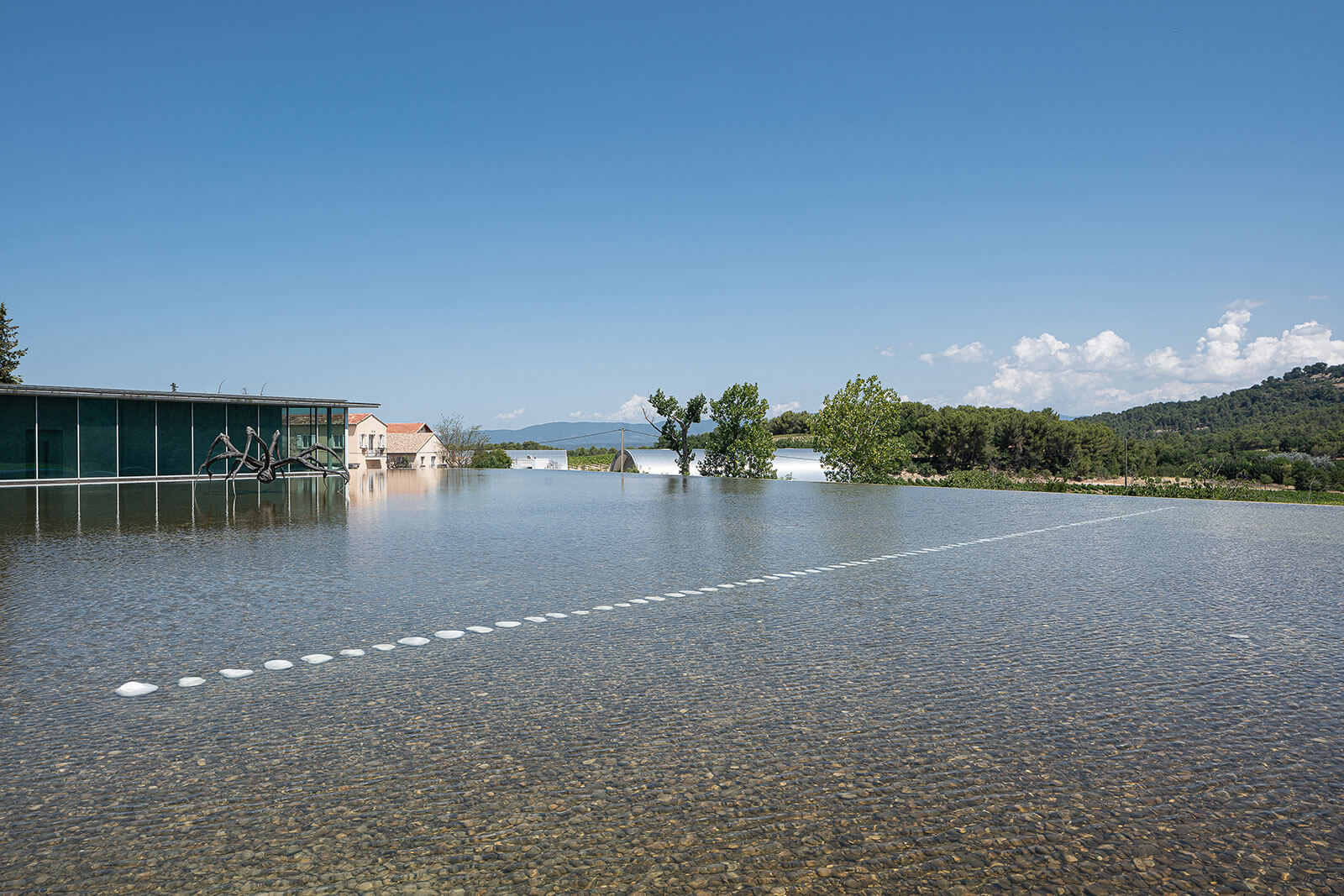
Richard Long, ‘A Line in Provence’
COURTESY: Richard Long & Château La Coste / PHOTOGRAPH: Stéphane Aboudaram
Long, a pioneer of Land Art, has also installed one of his works in a former wine cellar. ‘From Stone to Stone’ is like a promenade composed of three types of Provençal stones that juxtaposes with two red clay frescoes on the walls.
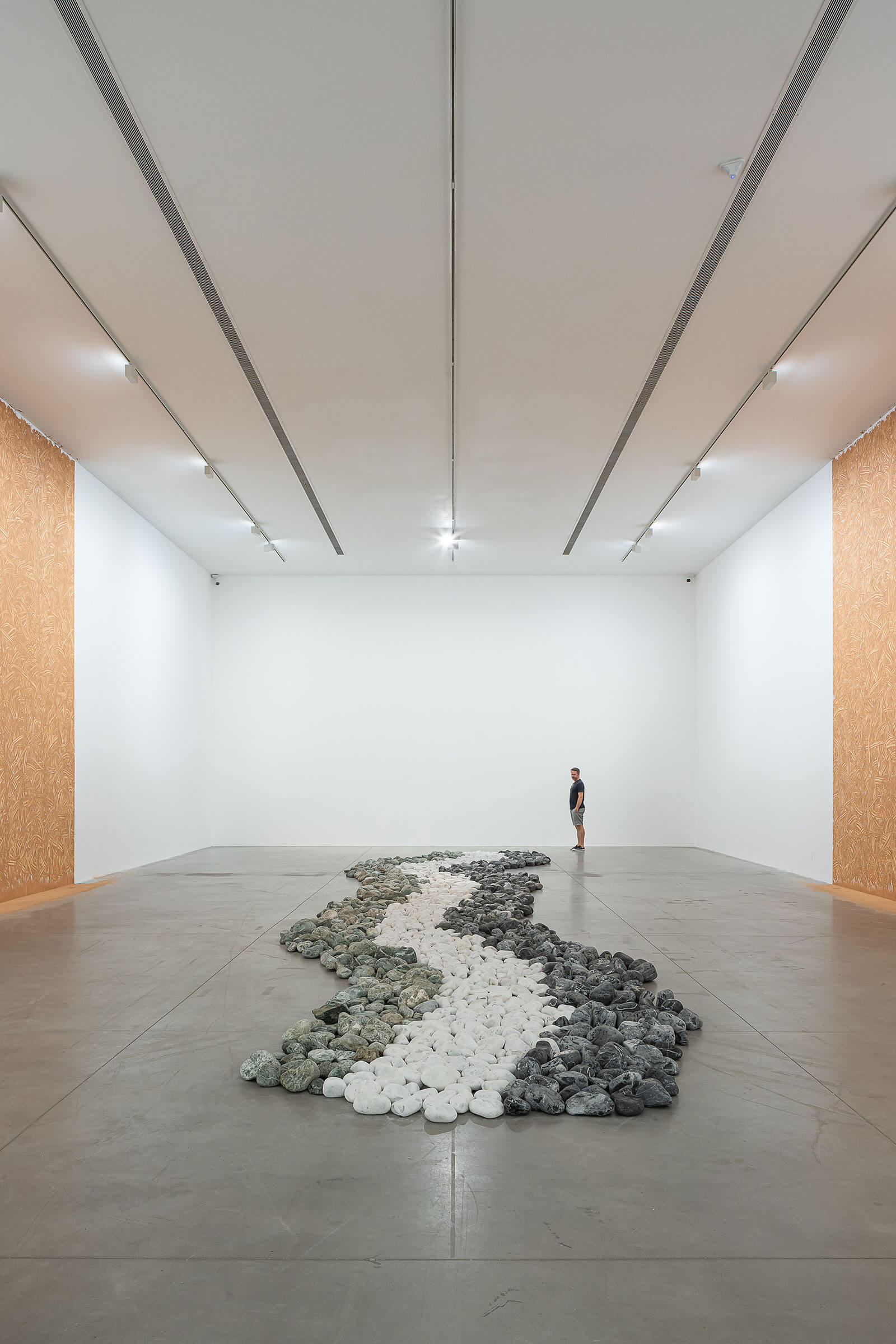
Richard Long, ‘From Stone to Stone’
COURTESY: Richard Long & Château La Coste / PHOTOGRAPH: Stéphane Aboudaram
While Long’s piece channels the element of earth, the exhibition, ‘A Rat Surrendered Here’, by Roni Horn in a discreet pavilion designed by Renzo Piano channels the element of water. Besides her large blue and black glass sculptures are police reports about anonymous people who drowned by suicide in the Thames.
The two shows resonate with how the permanent artworks on site blend with their surroundings. This curatorial philosophy is visible throughout the expansive terrain, from Frank Gehry’s ‘Pavilion of Music’ (2008) – an auditorium on the grass whose roof looks like it is crashing down – to dozens of works on the hills and near the vineyards. “The harmony is only possible thanks to strong curatorship,” says visiting artist JR, who made a sculpture featuring black-and-white faces for Château La Coste’s luxury boutique hotel. As JR observes: “Each artist worked whilst respecting the place rather than disrupting it.”
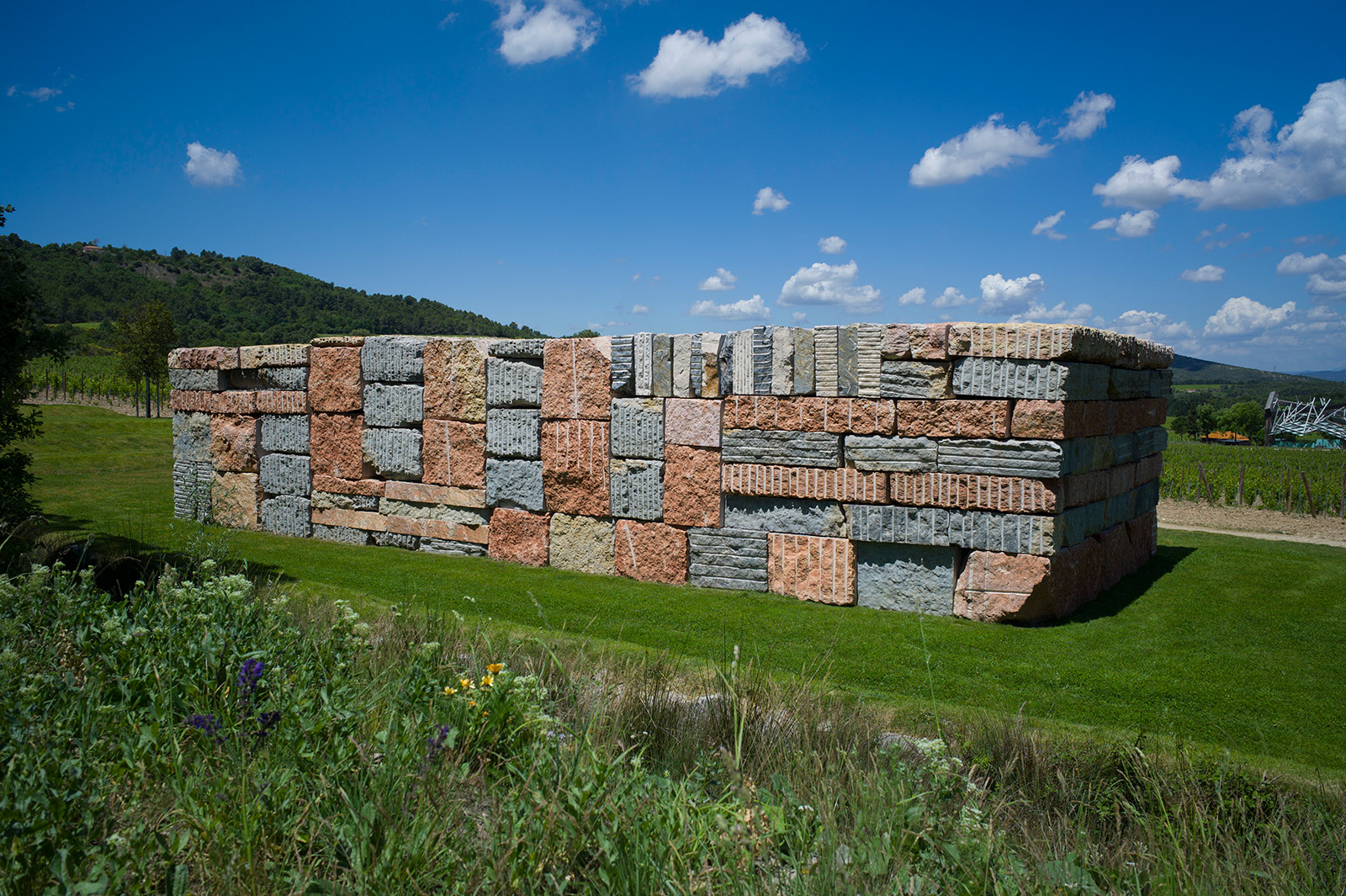
Sean Scully, ‘Wall of Light Cubed’, 2007
COURTESY: Sean Scully & Château La Coste
Among the highlights are Sean Scully’s ‘Wall of Light Cubed’ (2007) – a huge sculpture made from variously toned natural stones arranged like blocks of colour; Tia Thuy Nguyen’s ‘Silver Room’ (2016-2018) – a three-level, house-sized installation on stilts with an open roof and a hidden white quartz Buddha statue; and Andy Goldsworthy’s ‘Oak Room’ (2009), a cavernous, spatial work resembling an enormous bird’s nest.
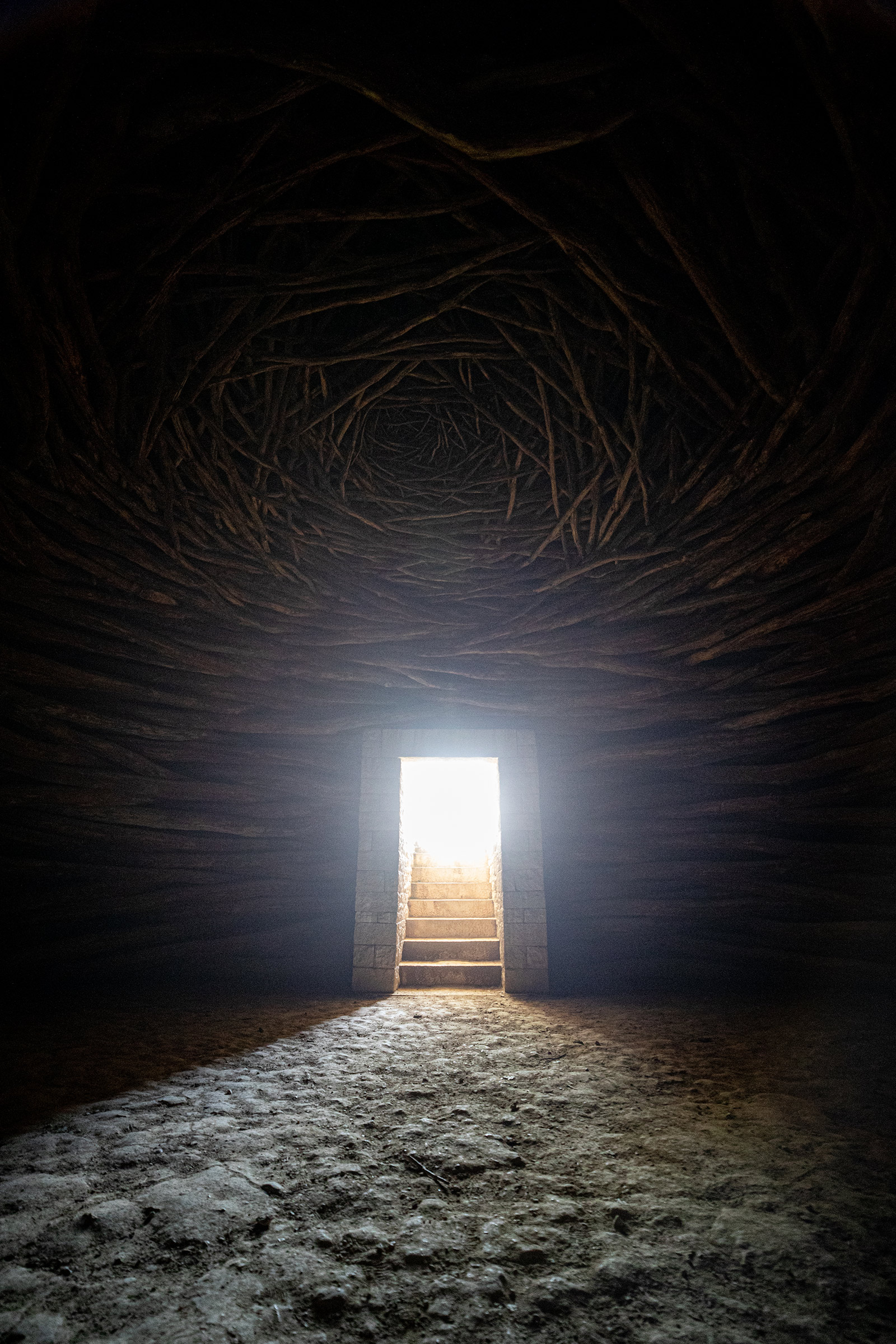
Andy Goldsworthy, ‘Oak Room’, 2009
COURTESY: Vincent Agnes & Château La Coste
This August, a new pavilion designed by Richard Rogers opens with an inaugural exhibition of paintings by the Korean artist Park Seo-Bo – the latest addition to McKillen’s ongoing venture that lets nature thrive whilst fêting creation.
Constance Guisset: Objectif Villa! at Villa Noailles in Hyères
In 2009, Constance Guisset won the public’s prize at Design Parade at the Villa Noailles in Hyères in the Var department, south of France. Twelve years later, she is welcomed back as president of the jury of the fifteenth edition of the festival founded by Jean-Pierre Blanc and which is known for recognising young talent. In the interim, Guisset has become one of France’s most exciting names. She had an exhibition at the Musée des Arts Décoratifs in Paris in 2017-2018, has designed the Parisian offices of Van Cleef & Arpels and the new Ernest restaurant for La Samaritaine department store in Paris.
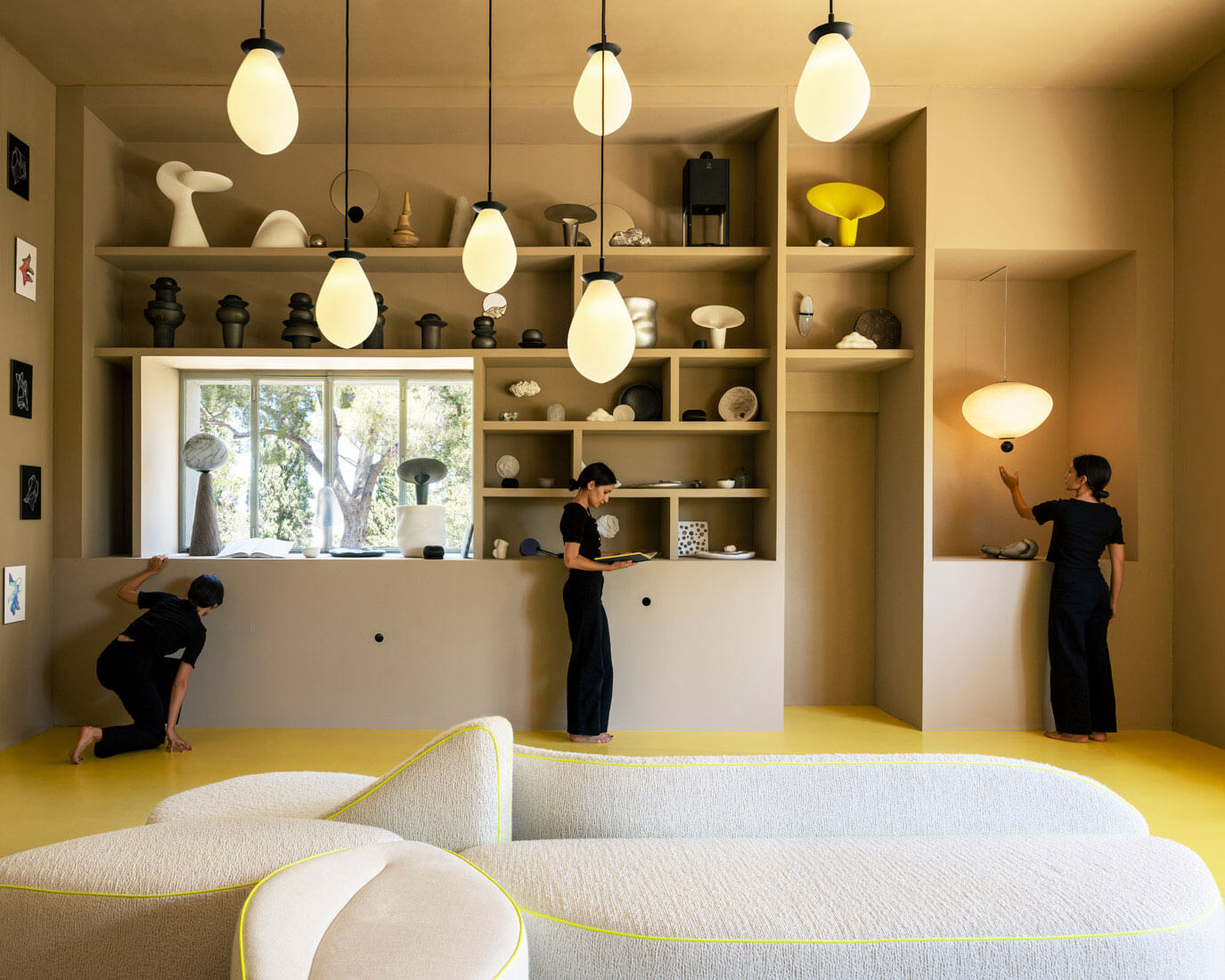
Exhibition view, including ‘Waves’ modular seating for La Cividina, 2018; the ‘Leviosa’ lamp, 2017; and the ‘Mezcalienne’ and ‘The Shrouds’ collections of black vases ,edited by Maison Marcoux Mexico, 2018.
COURTESY: Constance Guisset & Villa Noailles
Besides judging the competition, Guisset has a solo show on the top floor of the Villa Noailles – an early modernist gem designed by Robert Mallet-Stevens for the art patrons Charles and Marie-Laure de Noailles in the 1920s. Paying tribute to Marie-Laure Noailles’s curiosity about UFOs, Guisset has transformed the sequence of rooms at her disposal into a wonderful scenography about space.
‘Guisset Space Station’ is located in a former squash court. Inventive and fun it evokes the adventure of take-off and, by metaphorical extension, the launch of a design studio. The control room panel is used to present the vast array of products that Guisset has created since graduating from ENSCI, France’s national higher education school of industrial creation, in 2007. Beyond this is a black-painted, lunar lounge inspired by meteorites and the surface of the moon where lights sway above an organically shaped sofa.
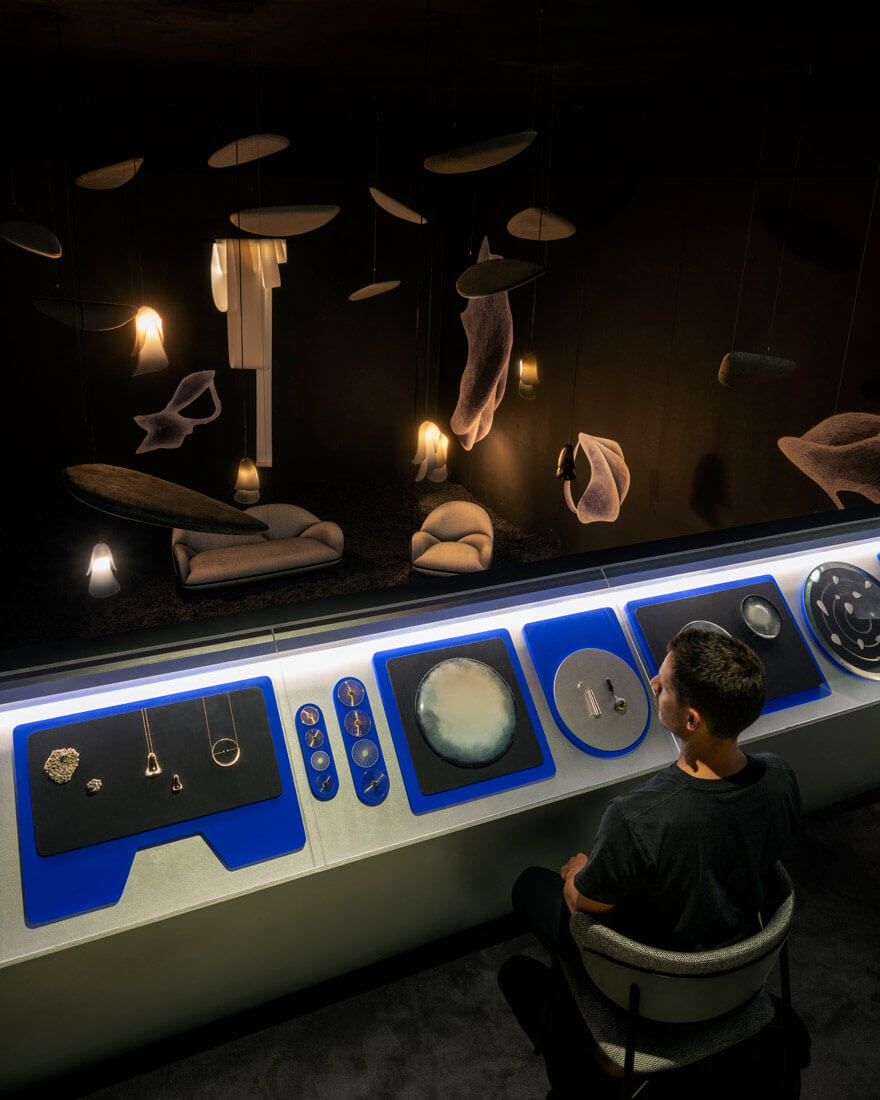
Constance Guisset, ‘Space Station’, 2021 with ‘Scape sofa’ and ‘Scape armchair’, 2020, for Wow Design; and ‘Angelin’ light, 2017
COURTESY: Constance Guisset & Villa Noailles
“Inventive and fun it evokes the adventure of take-off and strikes a metaphor with the launch of a design studio”
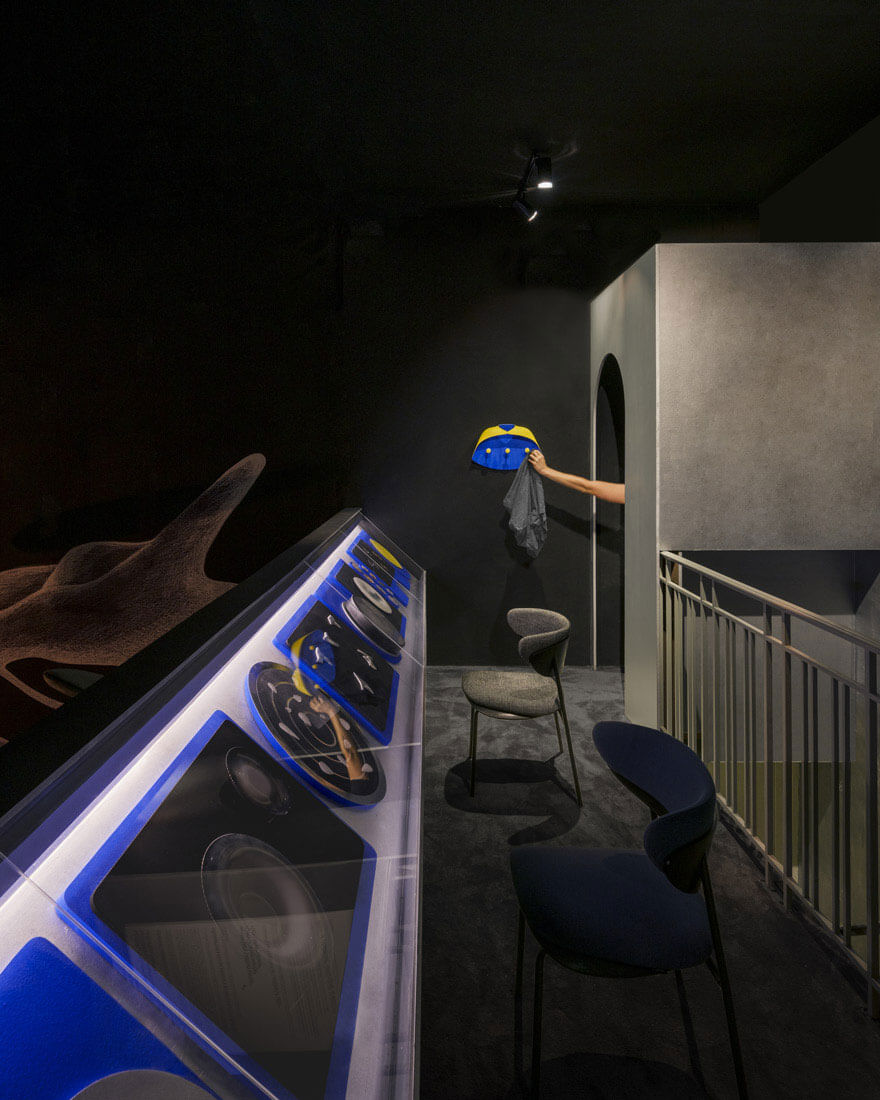
Constance Guisset, ‘Space Station’, 2021.
COURTESY: Constance Guisset & Villa Noailles
“The control room panel is used to present the vast array of products that Guisset has created since graduating”
“Winning the public’s prize at Villa Noailles as a young designer enabled me to work and travel, so I wanted to offer another journey to the public,” Guisset, 44, explains. “When astronauts take off into space, they are confined for a long time. And as we’ve just come out of lockdowns, I wanted to take people into space.”
Guisset sets the joyous tone of the exhibition on the roof terrace. It features furniture made from folded, faceted metal in sunset tones and the ‘Francis’ (2011) circular mirror with chromatic pigments that scooped the 2012 Wallpaper* design award for best use of colour.
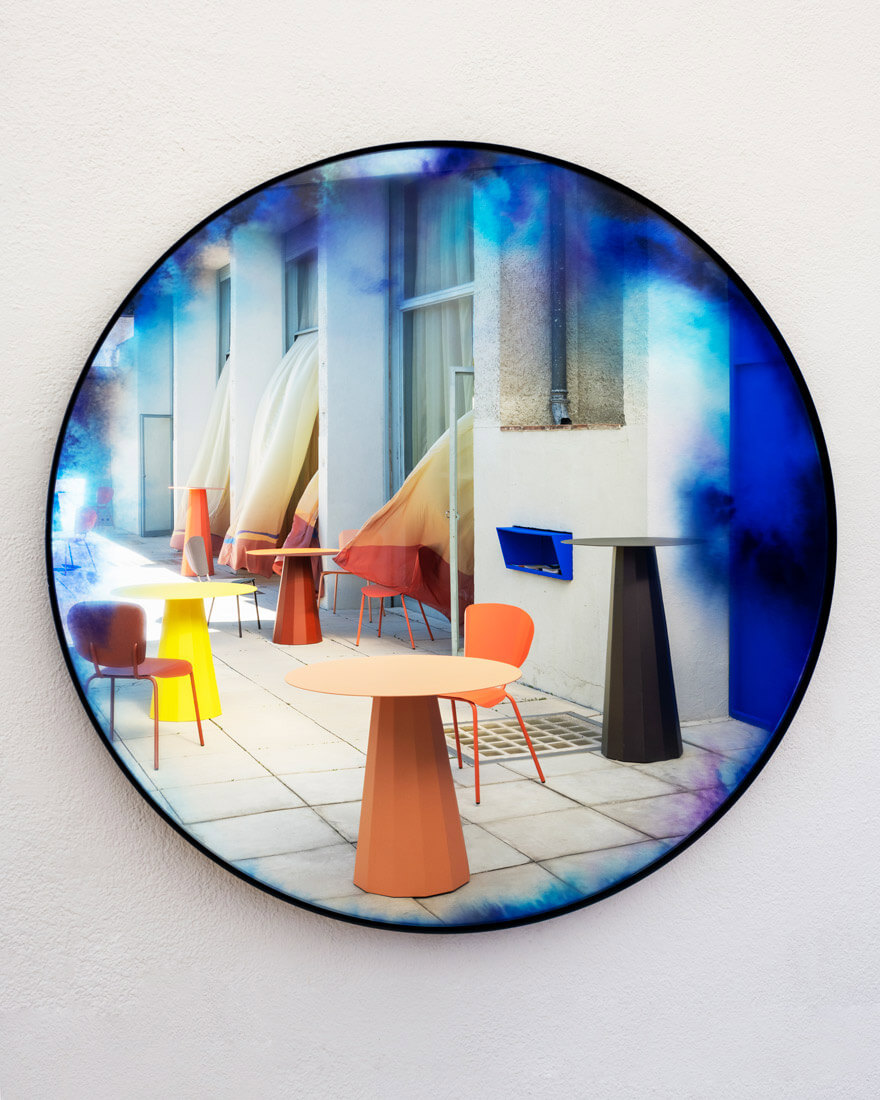
Constance Guisset, ‘‘Francis’ circular mirror, 2011
COURTESY: Constance Guisset & Villa Noailles
Giving a clue of what will be discovered elsewhere, a horizontal aperture offers visitors a glimpse of a multitude of white paper maquettes fluttering in the breeze of a fan. The maquettes show the early stages of Guisset’s projects and give a sense of her studio in Paris.
Guisset plunges us into a paradisiacal atmosphere in the inside swimming pool area. Against a mural of a sunny, mountainous landscape, one finds her popular ‘Vertigo’ graphic lamp (2010) and cosy sofas made from round cushions. The cone-shaped ‘Cosme’ sculpture recalling a stalactite, produced by Mouvements Modernes, is reflected into an oasis over the swimming pool. The idea is that the objects, “soothed” by the process of industrialisation following their conception, are heading towards the oasis, thirsty for evolution.
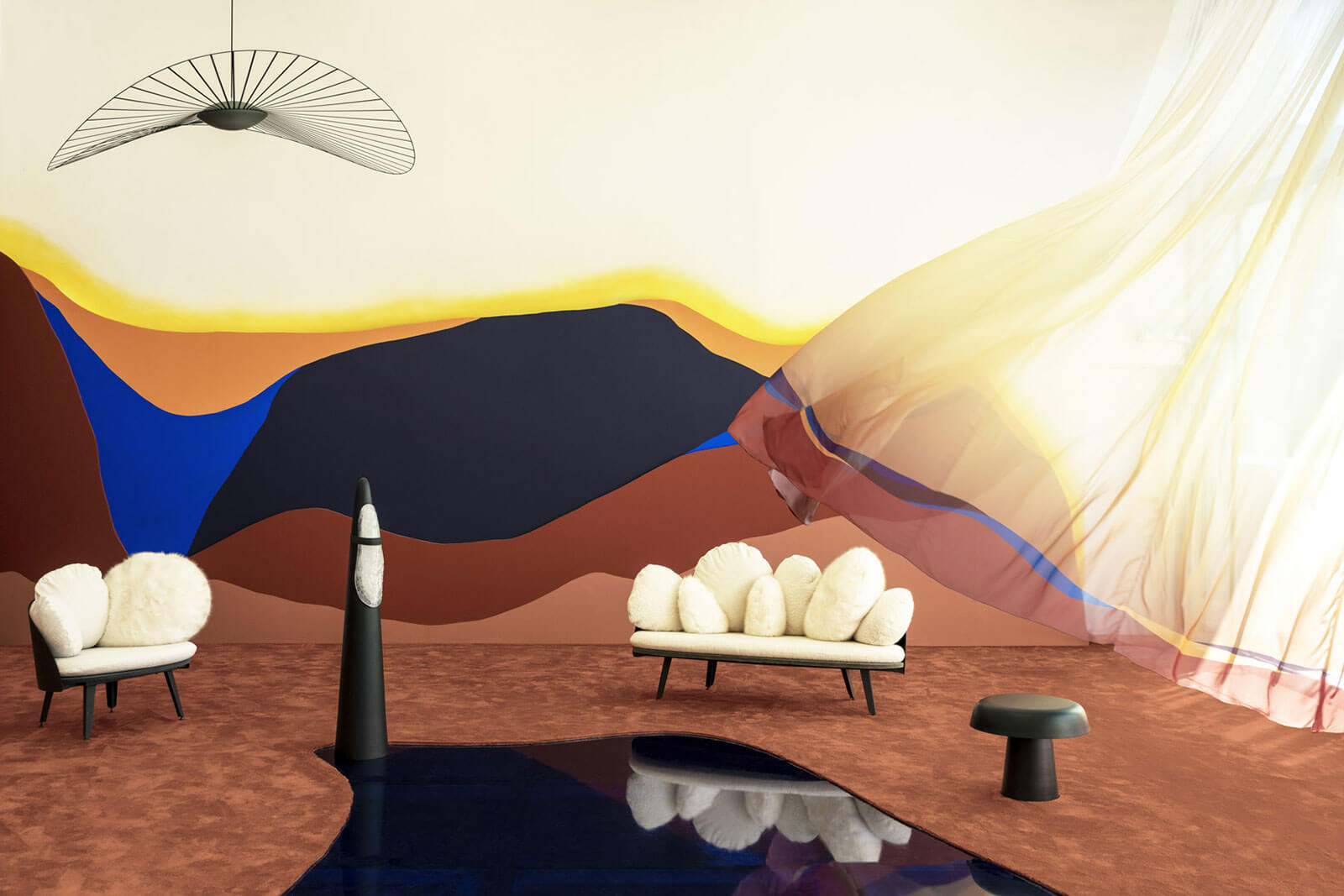
Constance Guisset, ‘Nubilo’ armchair and sofa, 2014, edited by Petite Friture; (above) ‘Vertigo’ lamp, 2010, edited by Petite Friture; (floor) ‘Cosme’ lamp edited by Mouvements Modernes
COURTESY: Constance Guisset & Villa Noailles
In the former gym are delicate, abstract drawings that Guisset made during the pandemic along with ‘Waves’ modular seating (2018) for La Cividina and the ‘Leviosa’ lamp (2017) with a levitating switch, which has been acquired by the Centre Pompidou. Also intriguing are the ‘Mezcalienne’ and ‘The Shrouds’ collections of black vases (2018), produced by Maison Marcoux Mexico, that Guisset made after meeting Mexican ceramicists in Oaxaca working with black clay. “It’s something quite intimate, a bit like my studio, and the idea is to be in the mind of the explorer and how we need to look at what’s around us,” Guisset says.
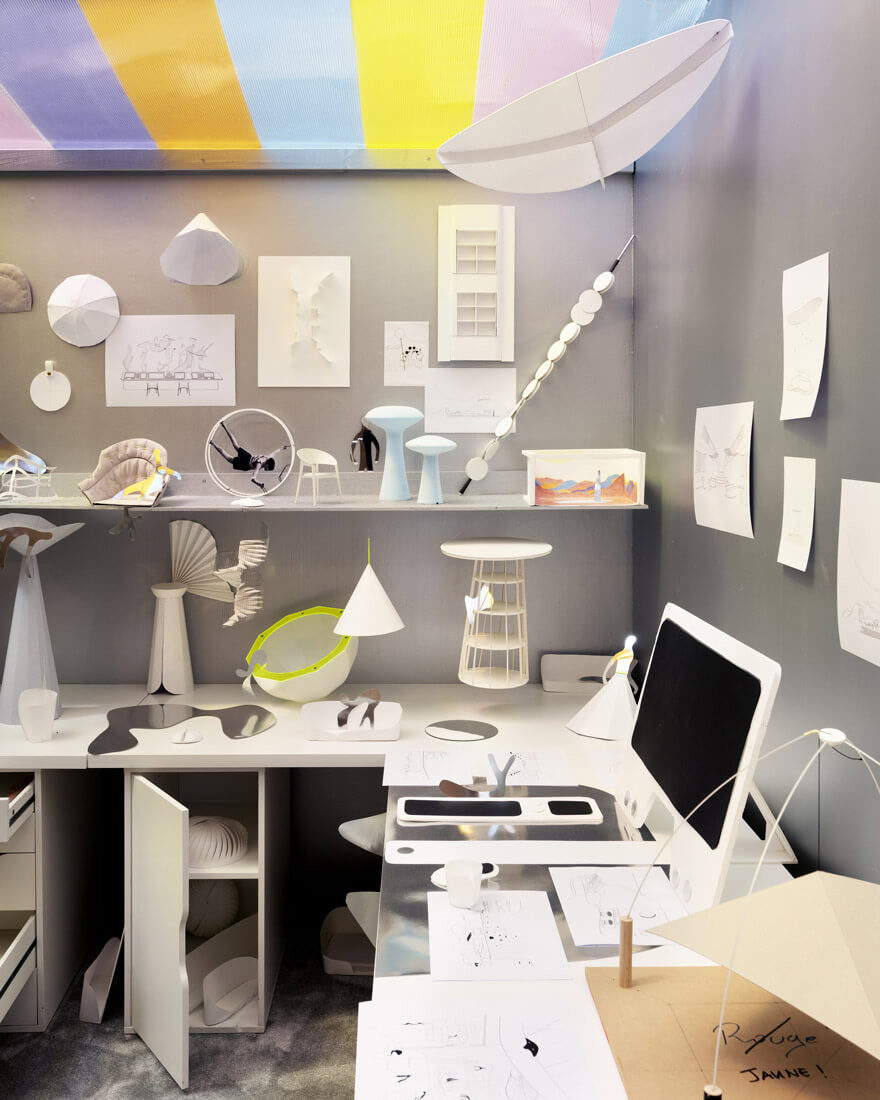
Installation view
COURTESY: Constance Guisset & Villa Noailles
Certainly, Guisset makes a compelling, visual argument for her outlook on Earth amidst the current obsession with space. “All this craziness about Mars at the moment amuses me a bit when we all know that we should be looking at our own planet,” she remarks. One comes away with the impression that a lot more can be expected from Guisset and her soft, yet powerful, narratives.
Hubert Le Gall: ‘A Greek Fantasy’ is at Villa Kerylos until 26th September 2021.
Rue Gustave Eiffel, 06310 Beaulieu-sur-Mer
Richard Long’s ‘From Stone to Stone’ and Roni Horn’s ‘A Rat Surrendered Here’ are at Château La Coste until 24th October 2021.
2750 Route De La Cride, 13610 Le Puy-Sainte-Réparade
Constance Guisset: Objectif Villa! is at Villa Noailles until 5th September 2021.
Montée de Noailles, 83400 Hyères




